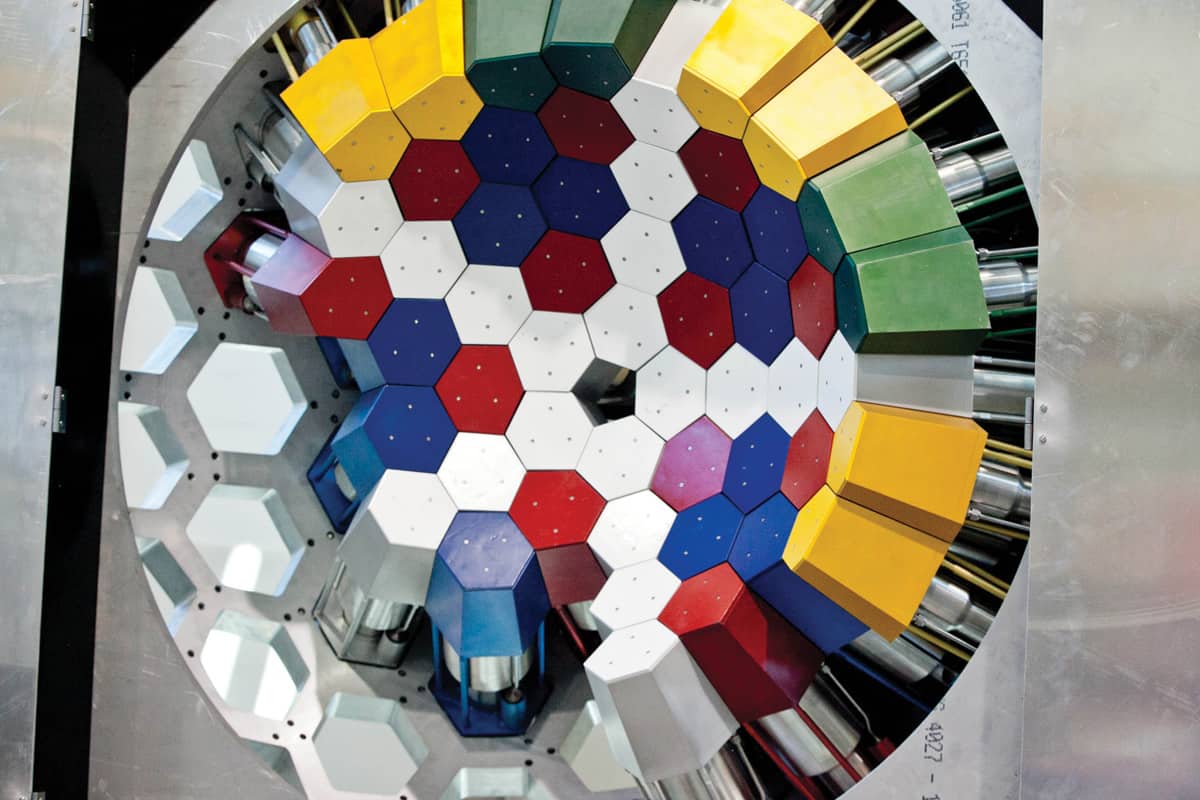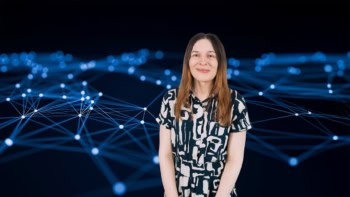Kathryn Hayashi is the CEO of TRIUMF Innovations, the commercial arm of Canada’s national particle accelerator laboratory. She spoke to Physics World about the challenges of developing spin-out companies based on the lab’s research

What is TRIUMF Innovations?
We are the private sector-facing part of TRIUMF. If you are a company or a private investor wanting to interact with TRIUMF in any way, we are here to help facilitate that. Originally, our focus was very much on creating spin-off companies, but we also offer proton and neutron irradiation services, and we have a longstanding relationship with Nordion to produce medical radioisotopes for distribution across North America and the world.
What is your background?
I’ve been at TRIUMF for a little over a year, starting in February 2017. Before that I was in the biotech world – I worked for an organization called the Centre for Drug Research and Development as part of the founding executive team, and previously for a public biotech company. For me, the big overlap has been in nuclear medicine, because historically, a lot of the commercialization that TRIUMF does has been in that area. So there are definitely some things we’re working on where we’ll be able to leverage my experience and networks in biotech, but I’ve also learned a lot about physics in the past year.
How does TRIUMF Innovations help spin-offs get started?
It depends on the technology and who’s involved, but we might look for champions for a technology to develop it further; help companies create business plans; or try to find partners to license or invest in new technologies. A good example is ARTMS Products, which makes a cyclotron-based system for producing technetium-99m, a short-lived isotope used in medical imaging. Many hospitals have a small cyclotron in their basement where they produce isotopes for patient treatments, and the ARTMS product can either be added to this or the original equipment manufacturer can incorporate it into their system.
This technology was developed at TRIUMF in partnership with a consortium of Canadian research organizations to solve the problems associated with Canada shutting down the Chalk River nuclear reactor, which had previously produced essentially all of this important isotope. We helped ARTMS develop its business plan and find investors, and in 2017 it won the British Columbia Tech Association’s impact award for the most promising pre-commercial technology. It also closed its first round of venture financing just before Christmas that year, so we’re excited to see ARTMS evolve into a real operating business. It’s still a relatively early-stage company, but it has multiple successful installations with GE and the venture financing should enable it to ramp up.
What, in your view, are the biggest challenges facing start-ups in the instrumentation and vacuum sector?
Funding is a challenge for any start-up, but spin-outs based on laboratory research or equipment encounter an additional hurdle, which is that the funding available is generally intended for innovative new research. You don’t necessarily get funding to validate results, or to repeat an experiment to make sure you’ve got it right. So development funding is always a challenge. The other challenge is gathering the expertise you need from different areas and translating it out of a research setting and into a business setting. Suppose you have a bunch of scientists with a great idea. How do you present that idea as an investment opportunity? To do that, you need a new set of skills, a new language and new networks, and that’s a gap that we’re trying to fill.

We are working on a programme in partnership with the University of British Columbia’s Sauder School of Business that is designed not just for people who are going to found companies (although they are incredibly important and I look for them every day), but also for scientists who want to innovate and get their ideas out into the world while remaining involved in basic, discovery-driven research. We want to broaden the culture of entrepreneurship within TRIUMF so that even career scientists are informed about concepts such as confidentiality and intellectual property. The goal is to get these “intrapreneurs” more involved in creating technologies quickly, efficiently and cost-effectively so that these technologies are attractive for private-sector investment, while also educating people who are interested in working for spin-off companies about how that is different from working in a government laboratory or in academia.
Aside from ARTMS, what are some other projects that TRIUMF Innovations is working on right now?
A few years ago, a mining researcher at the University of British Columbia asked us if we could help her reconfigure a medical PET scanner so that she could use it to examine mining slurry. Our response was essentially, yes, we could, but we could also create a PET scanner that was specifically designed for mining applications – on the right size and scale, for example, and with detectors designed not for human disease but for industrial samples. And the professor was like, “Oh, yeah, that would be great!” However, there are other applications for this technology, too. It’s all about trying to understand what is flowing within a liquid sample, so you could also imagine using it with pulp in a paper mill or even in food manufacturing. The challenge is to figure out where the market need is and then develop the technology to meet that need.
Another company I’ll mention is CRM GeoTomography. It was initially funded via a grant from Canada’s Centres of Excellence for Commercialization and Research, which were set up to encourage commercialization and spin-off creation. That grant enabled CRM GeoTomography to develop a prototype detector that uses muons – which of course we study all the time at TRIUMF – to create a 3D map of the Earth’s crust, down to about a kilometre or so. A mining company might use that kind of map to understand where an ore deposit was, but we’re also looking at future applications in the oil and gas industry and even in border security. An interesting side note is that CRM GeoTomography is as much about data science as it is about muon detection. You can build a detector, place it in the ground and have it take a bunch of readings, but the real value is in using all that detector data to create a reliable, useable 3D map. The importance of data science skills to technology development is something we’re seeing more and more.
What advice would you offer to would-be entrepreneurs (or maybe intrapreneurs) in this sector?
There are a lot of resources that can help, not just in Canada or at TRIUMF but at facilities and institutions around the world, so my advice is to go looking for them. Pretty much every university and large laboratory will have some kind of technology transfer office that can help answer questions such as “How do I decide what the market might need?” or “How do I talk to potential clients about my technology?” We try to be proactive about this here at TRIUMF – my team is involved in a lot of research meetings to try to identify technologies that could be commercially interesting – but we also have researchers just walk into our office and say, “Hey, can I talk to someone about the idea I have?” We welcome them in, listen to their idea, help them determine whether they need to make an invention disclosure or whether there’s something that could be patentable, and also get them thinking about who might use their technology or whether there are industry partners who would be interested in licensing it. Just taking that first step of connecting with people is incredibly important.



